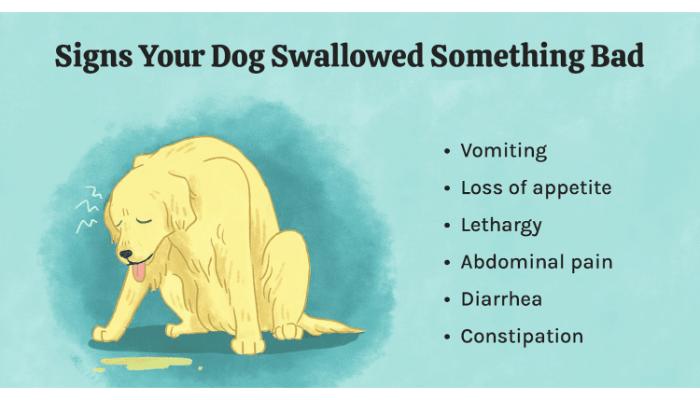You’ve just discovered your dog’s gotten into something they shouldn’t have, and panic sets in. It’s crucial to know what signs to watch for and how quickly they might appear.
In this guide, you’ll learn about canine digestion, what foods can harm your furry friend, and the early warning signs of distress. We’ll also cover the immediate steps you should take and when it’s time to call the vet.
Your dog’s health could depend on your next actions.
Understanding Canine Digestion:
Your dog’s digestion, a complex process involving the breakdown and absorption of food, typically takes between 6 to 8 hours to start exhibiting signs if something harmful is ingested.
Digestive timescales in canines are crucial for understanding how quickly symptoms may present themselves. This period allows for nutrient absorption, where essential components are assimilated to maintain your pet’s health.
When your dog consumes something dangerous, this timeline is vital. It’s the window in which you can anticipate the onset of distress. Being aware of this schedule empowers you to respond promptly to potential emergencies.
Common Toxic Foods That Pose Risks to Dogs:
Following the digestion timeline, it’s crucial you’re aware of what foods can harm your dog, including chocolate, grapes, and onions, which can trigger symptoms within hours of ingestion. Dog allergies and breed sensitivities can exacerbate the risk, so it’s vital to know which foods are universally toxic to canines:
- Chocolate: Contains theobromine, which is toxic to dogs even in small amounts.
- Grapes and Raisins: Can cause kidney failure; the exact toxic substance is unknown.
- Onions and Garlic: Damage red blood cells, leading to anemia.
- Xylitol: A sweetener found in gum and baked goods that can cause insulin release and hypoglycemia.
Keep these away from your furry friend to prevent any adverse reactions. If you suspect your dog has ingested something toxic, contact your veterinarian immediately.
Recognizing Signs of Trouble in Your Dog’s Well-being:

If your dog ingests a toxic substance, you’ll often notice early warning signs such as vomiting, diarrhea, or lethargy within a few hours. These symptoms can escalate quickly, so it’s crucial to be vigilant and responsive. Appetite loss and behavioral changes are additional indicators that your dog may be in distress.
Here’s a quick guide to spotting trouble early on:
| Symptom | Description | Action |
|---|---|---|
| Vomiting | Frequent, may contain blood or toxins. | Contact your vet ASAP. |
| Diarrhea | Loose stools, possibly with blood. | Keep hydrated, see vet. |
| Lethargy | Unusual tiredness or disinterest. | Monitor, consult vet. |
| Appetite Loss | Refusal to eat normal food. | Offer bland diet, vet visit if persists. |
| Behavioral Changes | Sudden aggression or confusion. | Note symptoms, vet check. |
It’s essential to act promptly if you notice any of these signs. Quick intervention can make a significant difference in your dog’s recovery.
Immediate Steps to Safeguard Your Dog’s Health:

Act quickly to ensure your dog’s safety the moment you suspect they’ve ingested something harmful. Dietary differences between dogs and humans mean common foods can be toxic to your pet. Don’t waste precious moments as you assess the situation.
Here’s what to do:
- Remove any remaining harmful substance: Immediately clear away anything your dog could ingest more of.
- Check for symptoms: Look for signs of distress or discomfort.
- Contact your veterinarian: Seek professional advice on the next steps.
- Do not induce vomiting without guidance: It can be dangerous to induce vomiting without a vet’s instruction, as some substances cause more harm coming back up.
Your vet’s expertise will consider the specific dietary differences and may or may not recommend induced vomiting, based on the substance ingested and your dog’s condition.
When to Reach Out for Your Dog’s Well-being:
Contact your vet immediately if you even suspect your dog has ingested a potentially dangerous item, as early intervention can be critical. Time is of the essence in these situations, and your vet’s guidance can make a significant difference in your dog’s prognosis. Don’t hesitate because you’re unsure if the substance is toxic; it’s better to err on the side of caution.
Check your vet’s availability, but if it’s after hours or they’re not reachable, seek out emergency clinics in your area. These facilities are equipped to handle urgent cases and can provide immediate care. Remember, symptoms can escalate quickly, and your prompt response can help ensure the best outcome for your beloved pet. Your empathy and quick action are vital during these emergencies.
Frequently Asked Questions:
Yes, your dog’s breed and size can influence the onset of symptoms. Breed susceptibility and metabolic rate play roles, with smaller dogs often showing effects quicker due to their faster metabolism. Stay vigilant.
Your dog’s pre-existing health conditions, like genetic predispositions, can significantly impact their reaction to toxins. Medication interactions may exacerbate symptoms, so it’s crucial to monitor closely and consult your vet immediately.
You can prepare by knowing first aid like inducing vomiting or administering activated charcoal. Keep poison hotline numbers handy and understand when stomach pumping at a vet clinic becomes necessary. Stay calm and informed.
Puppies, with their remarkable resilience, may initially withstand toxins better than seniors. However, due to metabolic differences, their symptoms can appear more suddenly and severely, demanding prompt, empathetic veterinary care for your beloved pet.
If your dog frequently eats harmful items without symptoms, they risk long-term damage. Implementing dietary management and prevention strategies is vital to protect their health and prevent chronic conditions from developing.
Conclusion:
As shadows of uncertainty loom, remember that timing is critical. If your furry friend ingests something harmful, symptoms can emerge within minutes to hours. Be vigilant; watch for subtle shifts in behavior or health.
At the first hint of distress, don’t hesitate. Act swiftly, with precision, to purge the poison from your companion’s system. In this race against the clock, your prompt response and a call to the vet could be the lifeline your dog desperately needs.

Hey there, I’m Janet Brooks, a dog-loving student from California. I’m all about helping pups in need, especially those without homes. Me and my awesome friends work together to give shelter and love to stray dogs. Oh, and I also write blogs about dogs to share helpful info.